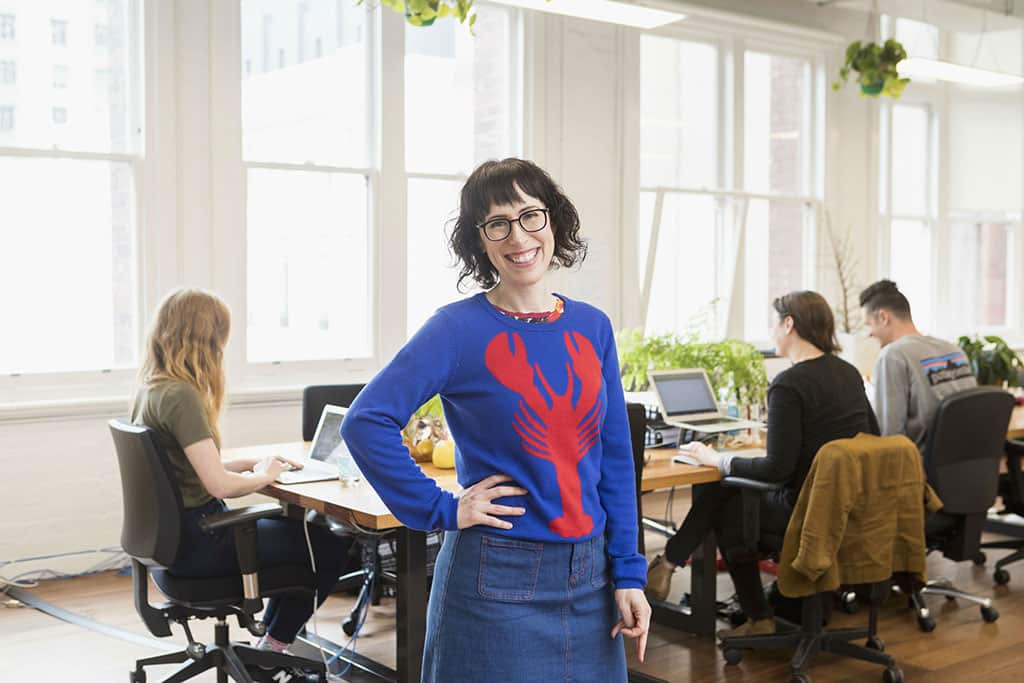Why I don’t expect emails from my team in the morning

On a typical workday, the Melbourne office of the innovation consultancy I run, Inventium, is often empty by 4.30pm. This is not because of an HR gimmick such as having four-hour workdays or finishing work at lunch in the summer. Instead, it’s because our working hours align with each employees’ Chronotype.
A person’s Chronotype refers to their body’s natural circadian rhythms and impacts when they feel most alert and energised and when they naturally need to go to bed.
Around 14% of the population are what Chronotype researchers call Larks, the type of people who are bright eyed and bushy tailed at 6am. Another 21% are Owls, who come to life at night. And the rest of us are Middle Birds and fall somewhere in between. You can determine where you and your team lie by completing the Morningness-Eveningness Questionnaire.
At Inventium, we have a handful of extreme Larks, and the rest of the team are moderate Larks or Middle Birds. Interestingly, we don’t have a single Owl on the team. We obviously need to diversify our recruitment strategy.
Knowing people’s Chronotypes allow individuals and their managers to structure their workday to align with their natural peaks and troughs of energy.
At Inventium, the Larks on the team will regularly start work at 4am or 5am and as a result, finish up a bit after lunch. And our Middle Birds tend to start at around 8am or 8.30am.
Larks and Middle Birds do their best work in the mornings. This is when they are at their cognitive peak and it is the perfect time to be undertaking deep, focused work.
The problem with most office environments is that they are full of obstacles that get in the way of long periods of focus. In fact, the average person can’t go for more than six minutes without checking their email or instant messenger. We crave the dopamine hit we get every time we check our messages and there is a note with fun or interesting news.
In our office, because we employ Larks and Middle Birds, we deliberately spend our mornings doing what Professor Cal Newport refers to as Deep Work. This is work that is cognitively demanding and requires focus. When we are engaged in Deep Work, I encourage my team to switch off from emails and any notifications. Indeed, some of the team will even switch on an auto-responder email letting people know they won’t be responding to their message instantly.
For me, I spend around four out of five mornings every week doing Deep Work. This might be in the form of writing, new product development, doing research for a podcast interview or doing strategy work. My email is switched off, and anyone that emails me will receive a note letting them know I stay out of my inbox in the morning.
If not receiving (or checking) emails in the morning sounds utopian to you, here are some practical strategies that you can use to create this change in your workplace.
Get to know your team’s Chronotype.
Ask your team to complete the Morningness-Eveningness Questionnaire so you can understand when their energy levels (and brain power) naturally peaks. The workday should then be designed around this rhythm.
Work to your Chronotype
Culture and behaviour change within an organisation lives and dies by what leaders do. In the case of breaking the default way of working (e.g. always being connected), understand your Chronotype and make sure you lead by example. Switch off your emails when you need to get focused work done and let people know about it.
Reset your expectations
Many people I speak to about these ideas will argue that their manager expects them to be constantly connected to email. If you manage people, think about what you would prefer: your staff to respond quickly to emails or your staff to prioritise doing deep, focused work and making meaningful progress on their most important projects. I know which option I’d prefer.
Changing the default settings by which we operate at work can be hard. But if you can realign your workday with your natural energy rhythms, you’ll see your productivity skyrocket.
Have you read?
# Top 10 Wet Places in the World.
# Top 10 Facts About Venice, Italy.
# The World’s Top 10 Places To See Before You Die.
# Top 5 Party Places In The World.
Add CEOWORLD magazine to your Google News feed.
Follow CEOWORLD magazine headlines on: Google News, LinkedIn, Twitter, and Facebook.
This report/news/ranking/statistics has been prepared only for general guidance on matters of interest and does not constitute professional advice. You should not act upon the information contained in this publication without obtaining specific professional advice. No representation or warranty (express or implied) is given as to the accuracy or completeness of the information contained in this publication, and, to the extent permitted by law, CEOWORLD magazine does not accept or assume any liability, responsibility or duty of care for any consequences of you or anyone else acting, or refraining to act, in reliance on the information contained in this publication or for any decision based on it.
Copyright 2024 The CEOWORLD magazine. All rights reserved. This material (and any extract from it) must not be copied, redistributed or placed on any website, without CEOWORLD magazine' prior written consent. For media queries, please contact: info@ceoworld.biz
SUBSCRIBE NEWSLETTER








